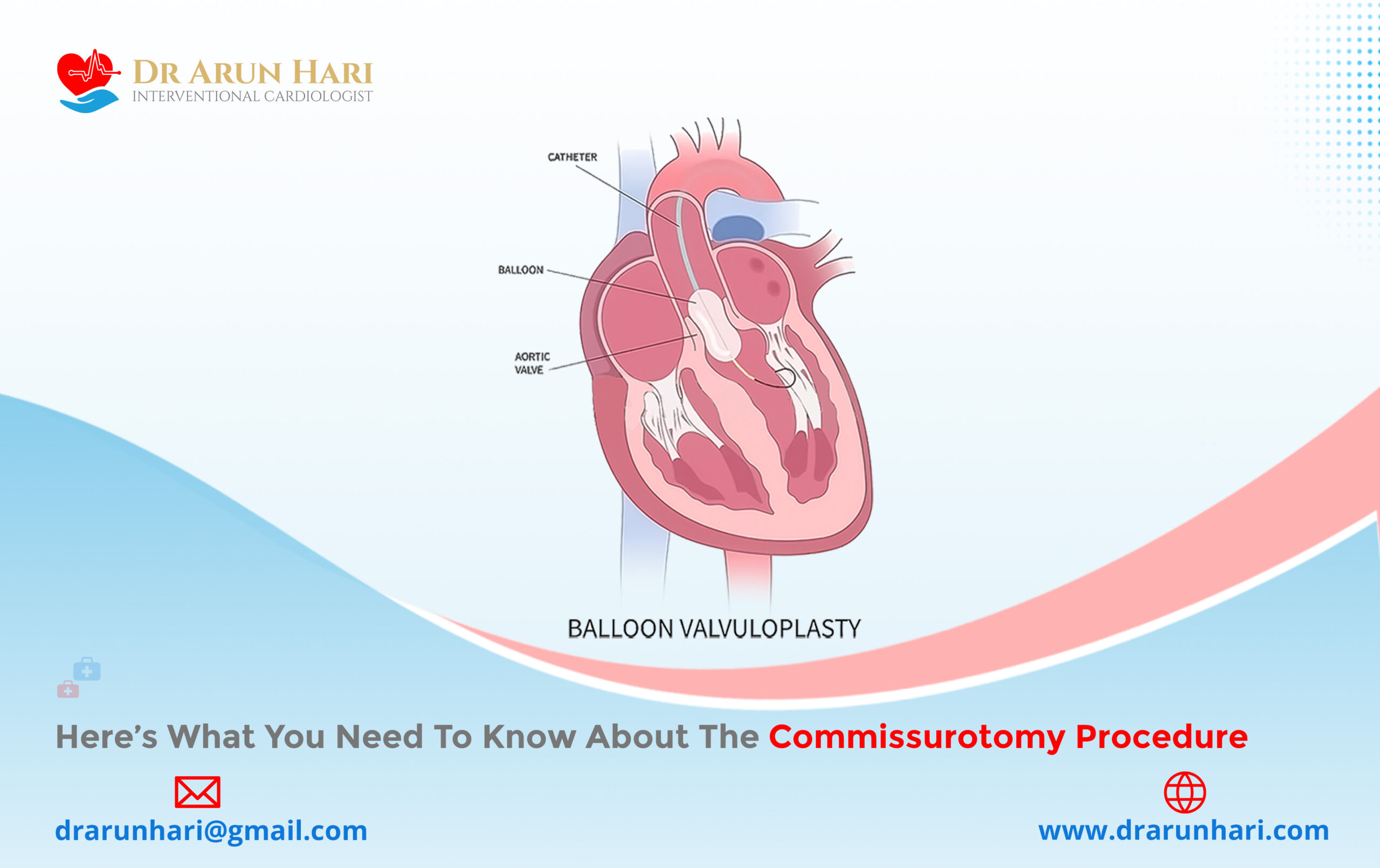What Is Commissurotomy Procedure?
Who Needs Commissurotomy Procedure?
What Happens before the Commissurotomy Procedure?
How Is the Commissurotomy Procedure Done?
What Happens after the Commissurotomy Procedure?
What Are the Benefits of Commissurotomy Procedure
Contact Dr Arun for Commissurotomy Procedure
What Is Commissurotomy Procedure?
Surgical Mitral Commissurotomy happens to be a procedure that doctors use to treat mitral stenosis, which is a condition wherein mitral valve narrows and becomes rigid, preventing it from opening enough for blood to pass properly through. The narrowed opening of the valve between the left ventricle and the left atrium of the heart, or stenosis, reduces blood flow from the heart and can lead to symptoms such as chest pain, fainting, or even heart failure. Various factors cause this condition of mitral valve stenosis, such as rheumatic heart disease, calcification of the valve, or a congenital heart defect. Commissurotomy Procedure is performed by a heart surgeon, and helps to restore blood flow and improve symptoms. The Commissurotomy Procedure involves cutting the stuck leaflets of the mitral valve tissue, to enable it to open more and restore normal blood flow through the heart.
Who Needs Commissurotomy Procedure?
Doctors recommend commissurotomy usually for people who have a narrow mitral valve. Even the patients with symptomatic mitral stenosis and good valve function can go for it! People having mitral valve stenosis, and are symptomatic, on medical therapy but still have symptoms and severe valve obstruction, are the most suitable for this procedure.
What Happens before the Commissurotomy Procedure?
Before undergoing the Commissurotomy Procedure, the patient will have a preoperative evaluation, and will have to undergo a few tests such as an EKG, chest X-rays, a cardiac catheterization, and an echocardiogram. These tests help the doctor determine the severity of the stenosis and the best way to treat it. They will then be put under general or local anesthesia.
How Is the Commissurotomy Procedure Done?
Doctors perform this procedure usually under general anesthesia. In this, a small incision is made in the chest and an endoscopic instrument is inserted to cut or shave off the leaflets. They then guide it to the heart. The surgeon then opens the sternum (breastbone) to access the mitral valve. Doctors then cut open the narrowed part of the valve to allow for improved blood flow. The mitral valve widens and opens by using a balloon.
What Happens after the Commissurotomy Procedure?
After the procedure, doctors will take the patient to the recovery room and monitored for any complications. They will then transfer the patient to a higher level of care where they will receive medications to reduce the risk of infection. The patient will need to stay in the hospital for a few days before release. They will also need to follow up with their doctor in order to ensure that their condition is improving.
What Are the Benefits of Commissurotomy Procedure
- An improved quality of life
- Decreased symptoms of mitral stenosis
- Reduced risk of further heart problems
- Improved mitral valve function
- Reduced symptom severity
Risks & Complications
This happens to be quite a safe & pretty effective procedure. However, any procedure carries risks, and it is important to discuss them with your doctor before proceeding. Still there are generally few risks and complications associated with the procedure, but they may include infection, bleeding, cardiac arrhythmias, stroke, and valve damage.
Contact Dr Arun for Commissurotomy Procedure
Come to Dr Arun; he will do the necessary tests to assess your condition and determine whether you are the right candidate for this Commissurotomy Procedure, and provide you the best medical service thereafter.





